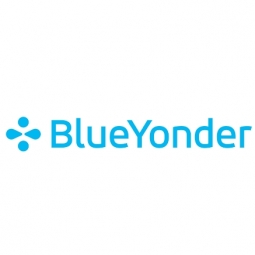下载PDF
Driving Out the Competition
技术
- 功能应用 - 仓库管理系统 (WMS)
适用行业
- 食品与饮料
- 零售
适用功能
- 仓库和库存管理
用例
- 仓库自动化
- 库存管理
服务
- 系统集成
- 软件设计与工程服务
挑战
NFT 是英国领先的时间敏感型冷藏食品和饮料物流服务提供商,它面临着阻碍其优化绩效的运营挑战。该公司传统的拣货方式导致其 220,000 平方英尺仓库利用率不足,SKU 激增,补货和退货几乎无法管理。此外,制造商生产产品的方式造成了销售截止日期和轮换错误的问题,导致浪费、额外的管理负担、罚款、索赔、处罚、退货和拒收。NFT 希望保护其商业声誉、保持客户销售并提高绩效。
关于客户
30 多年来,NFT 一直处于提供时效性强的冷藏食品和饮料物流服务的前沿。作为英国 (UK) 的行业领导者,NFT 是食品和饮料制造商和供应商与其零售客户之间的智能纽带。该公司通过其运输、仓储和物流解决方案提供主要和次要服务,目标是最大限度地降低复杂性、降低成本并提高客户满意度。NFT 代表其零售超市和杂货店客户提供综合运输和配送服务点,为英国市场约 250-400 家国际食品和饮料供应商提供服务。此外,NFT 还为英国主要杂货零售商提供次要物流服务,每天管理冷藏、常温和新鲜产品的整个收集、仓储、整合和后续配送过程。
解决方案
NFT 决定用自动化仓库分配解决方案取代其传统的拣货方式。在评估了各种仓库管理技术后,该公司选择了 JDA Software 的 Intelligent Fulfillment™ 套件中的解决方案。初始项目在 NFT 的旗舰 Daventry 仓库进行,NFT 目前在其三个仓库以及一个客户仓库中使用该解决方案。它还利用 JDA 仓库管理模块来处理劳动力管理、第三方计费和集成功能。JDA 联盟成员 LXE Inc.(现为霍尼韦尔)提供了 RF 功能。增强型解决方案允许客户进行低风险、分阶段过渡,实现优先的 EBITDA 收益,NFT 在不到 30 天的时间内实现了项目投资回报。
运营影响
数量效益
相关案例.

Case Study
The Kellogg Company
Kellogg keeps a close eye on its trade spend, analyzing large volumes of data and running complex simulations to predict which promotional activities will be the most effective. Kellogg needed to decrease the trade spend but its traditional relational database on premises could not keep up with the pace of demand.

Case Study
HEINEKEN Uses the Cloud to Reach 10.5 Million Consumers
For 2012 campaign, the Bond promotion, it planned to launch the campaign at the same time everywhere on the planet. That created unprecedented challenges for HEINEKEN—nowhere more so than in its technology operation. The primary digital content for the campaign was a 100-megabyte movie that had to play flawlessly for millions of viewers worldwide. After all, Bond never fails. No one was going to tolerate a technology failure that might bruise his brand.Previously, HEINEKEN had supported digital media at its outsourced datacenter. But that datacenter lacked the computing resources HEINEKEN needed, and building them—especially to support peak traffic that would total millions of simultaneous hits—would have been both time-consuming and expensive. Nor would it have provided the geographic reach that HEINEKEN needed to minimize latency worldwide.

Case Study
Improving Production Line Efficiency with Ethernet Micro RTU Controller
Moxa was asked to provide a connectivity solution for one of the world's leading cosmetics companies. This multinational corporation, with retail presence in 130 countries, 23 global braches, and over 66,000 employees, sought to improve the efficiency of their production process by migrating from manual monitoring to an automatic productivity monitoring system. The production line was being monitored by ABB Real-TPI, a factory information system that offers data collection and analysis to improve plant efficiency. Due to software limitations, the customer needed an OPC server and a corresponding I/O solution to collect data from additional sensor devices for the Real-TPI system. The goal is to enable the factory information system to more thoroughly collect data from every corner of the production line. This will improve its ability to measure Overall Equipment Effectiveness (OEE) and translate into increased production efficiencies. System Requirements • Instant status updates while still consuming minimal bandwidth to relieve strain on limited factory networks • Interoperable with ABB Real-TPI • Small form factor appropriate for deployment where space is scarce • Remote software management and configuration to simplify operations

Case Study
Energy Management System at Sugar Industry
The company wanted to use the information from the system to claim under the renewable energy certificate scheme. The benefit to the company under the renewable energy certificates is Rs 75 million a year. To enable the above, an end-to-end solution for load monitoring, consumption monitoring, online data monitoring, automatic meter data acquisition which can be exported to SAP and other applications is required.

Case Study
How Sirqul’s IoT Platform is Crafting Carrefour’s New In-Store Experiences
Carrefour Taiwan’s goal is to be completely digital by end of 2018. Out-dated manual methods for analysis and assumptions limited Carrefour’s ability to change the customer experience and were void of real-time decision-making capabilities. Rather than relying solely on sales data, assumptions, and disparate systems, Carrefour Taiwan’s CEO led an initiative to find a connected IoT solution that could give the team the ability to make real-time changes and more informed decisions. Prior to implementing, Carrefour struggled to address their conversion rates and did not have the proper insights into the customer decision-making process nor how to make an immediate impact without losing customer confidence.






